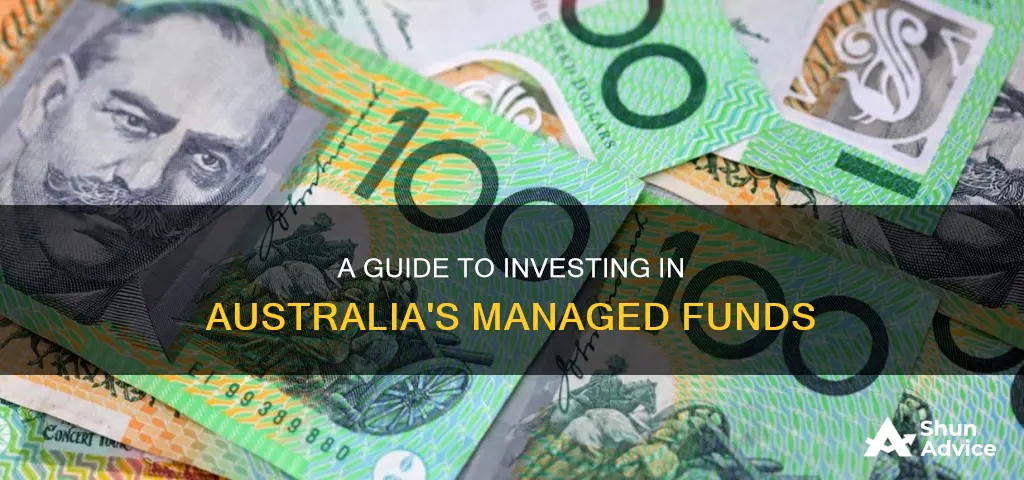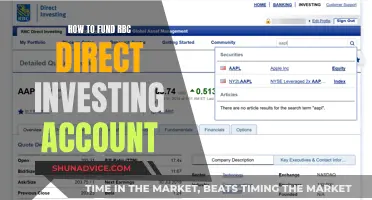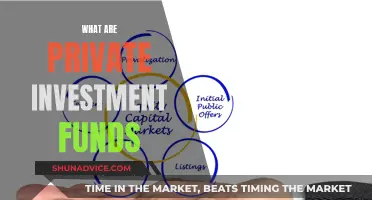
If you're looking to invest your money and want to pay a professional to make investment decisions on your behalf, a managed fund could be a good option. A managed fund is an investment where your money is pooled with other investors and overseen by a fund manager who holds and controls the money on your behalf.
There are two types of managed funds: listed and unlisted. Listed funds are traded on the share market and valued daily according to their price on the relevant stock exchange, whereas unlisted funds are bought and sold directly through the fund manager and are usually valued less frequently based on the value of the underlying assets held by the fund.
When investing in a managed fund, you don't own the underlying investments. Instead, you own 'units' in the fund or 'shares' in a Corporate Collective Investment Vehicle (CCIV). The value of these units or shares will rise and fall with the value of the underlying assets.
There are various types of managed funds, including single-asset managed funds, mixed-asset or multi-sector managed funds, and exchange-traded funds (ETFs). It's important to research the different types of managed funds, compare their long-term performance, and consider the associated fees and risks before investing.
| Characteristics | Values |
|---|---|
| Definition | A managed fund is a type of investment where your money is pooled together with other investors. |
| Who manages it? | A fund manager. |
| What does the fund manager do? | Buys and sells assets such as cash, shares, bonds and listed property trusts on your behalf. |
| What does the investor own? | Units in the fund or shares in the Corporate Collective Investment Vehicles (CCIVs). |
| What is the value of the units/shares? | Rises and falls with the value of the underlying assets. |
| Income | Some managed funds also pay income or 'distributions'. |
| Types of managed funds | Single asset managed funds, mixed asset or multi-sector managed funds, exchange traded funds (ETFs), listed investment companies (LICs), real estate investment trusts (REITs), etc. |
| How to choose a managed fund? | Prepare an investing plan, research the different types of managed funds, check the product disclosure statement (PDS) of the fund, compare managed funds, etc. |
| Fees | Establishment fee, contribution fee, management fees and costs, performance fee, adviser service fee, transaction fees, withdrawal fees, exit fees, etc. |
What You'll Learn

Understanding the different types of managed funds
Managed funds are a type of investment where your money is pooled with other investors and managed by a professional fund manager. There are thousands of managed funds to choose from, each with its own investment strategy, level of risk, expected returns, and costs. The different types of managed funds include:
Single Asset Managed Funds
These funds invest in a single asset class, such as shares, property, or bonds. Some examples include:
- Very low-risk, short-term investments like short-term money market deposits, government bonds, and bank bills.
- Fixed interest or bond funds that invest in low-risk securities like government bonds, bank bills, or mortgage-backed securities.
- Property loans (mortgages) that carry higher risk depending on the quality of the borrowers and the purpose of the loan.
- Residential, commercial, or property development funds that are high risk and may restrict short-notice withdrawals.
- Share (equity) funds that invest in listed companies in Australia and/or overseas, offering higher potential returns but also higher risk.
Alternative Investment Funds
These include hedge funds and funds that invest in private equity, derivatives, and commodities. They are generally high-risk investments, and financial advice should be sought before investing.
Mixed Asset or Multi-Sector Managed Funds
These funds invest in a range of assets, typically with around 85% in shares and property, and the rest in cash or fixed interest. The specific composition of the fund determines its expected returns and risk level.
Unlisted and Listed Managed Funds
Unlisted managed funds are the most common type of managed investment funds in Australia. The price of units is set by the fund manager, and buying or selling units requires dealing directly with the fund manager. Listed managed funds, on the other hand, trade on the share market, and investors can buy and sell units through a finance broker.
Protect Your 401k: Invest in Mutual Funds for a Secure Future
You may want to see also

How to choose a managed fund
There are thousands of managed funds to choose from, so it's important to do your research and understand the different types of funds, their risks and returns. Here are some key things to consider when choosing a managed fund:
- Types of managed funds: Managed funds can be single-asset or mixed-asset. Single-asset funds invest in one type of asset class, such as shares, property, bonds or cash. Mixed-asset or multi-sector funds invest in a range of different asset classes. It's important to understand the risks and returns associated with each type of fund and choose one that aligns with your financial goals and risk tolerance.
- Long-term performance: Look at the fund's performance over a longer period, such as 5 to 10 years. This will give you a better indication of how the fund is likely to perform in the future. Compare the fund's performance to similar managed funds or index funds that invest in the same asset class.
- Risks: Understand the risks associated with the fund. Some funds may use labels such as "low risk" or "capital protected", but these may not reflect the true risk level. Consider the likelihood of losing some or all of your investment and whether you are comfortable with that level of risk.
- Fees: Managed funds charge various fees, such as establishment fees, contribution fees, management fees, performance fees and adviser service fees. Small differences in fees can have a significant impact on your returns, so be sure to use a fee calculator to understand the full impact of fees on your investment.
- Investment goals: Consider your financial goals, investment timeframe and risk tolerance. Choose a fund that aligns with your goals and fits within your planned investment horizon.
- Diversification: Spreading your investments across different fund managers and funds that invest in different asset classes can help lower your overall portfolio risk.
- Product Disclosure Statement (PDS): The PDS contains important information about the fund, including the assets it invests in, the risks involved, the benchmark or target return, and how to address any issues. Be sure to review the PDS carefully before making any investment decisions.
- Minimum investment and restrictions: Check the minimum investment amount and any restrictions on withdrawing your money. Some funds may have time restrictions or freeze withdrawals under certain market conditions.
- Seek advice: If you're unsure, consider speaking to a licensed financial adviser to get personalised guidance based on your circumstances and goals.
Equity Funds: Where to Invest and Why
You may want to see also

The pros and cons of investing in a managed fund
Investing in a managed fund in Australia can be a great way to dip your toes into the investment market. Here are some pros and cons to consider before investing:
Pros:
- Expert management: Your fund is managed by a professional manager with extensive knowledge of the market and its operations, ensuring your investment is in safe hands.
- Diversification: By pooling your money with other investors, managed funds reduce the risk through diversification. This is the main attraction of such funds.
- Cost reduction: Sharing investments with other investors reduces the cost of investment and allows you to invest in assets with minimum investment requirements.
- Compounding benefits: Investing in managed funds for a longer period can result in the benefits of compounding due to investments and reinvestments of returns.
- Convenience: A managed fund allows you to pay a professional to make investment decisions on your behalf, saving you time and effort.
Cons:
- Lack of control: While you choose the type of fund, you have no control over the specific investments made with your money.
- Fees: Management and withdrawal fees are charged on your investment, reducing returns and increasing costs over time.
- Taxation: Any returns are treated as income and taxed accordingly. When you sell your units, the amount received is treated as capital gains and taxed again.
- Underperformance: Some funds may perform so poorly that the long-term inflation rate exceeds their long-term yields.
- Risk: While diversification reduces risk, it does not eliminate it. The value of your investment can still decrease, and you may lose some or all of your money.
Mutual Funds: Where to Invest for Maximum Returns
You may want to see also

Fees and costs associated with managed funds
When investing in managed funds, there are a variety of fees and costs that you should be aware of. These fees can impact your returns, so it is important to understand them before investing. Here is a detailed overview of the fees and costs associated with managed funds in Australia:
Establishment Fee
This is the fee charged when you first open your investment account. It is usually a percentage of the initial amount you invest, typically ranging from 0% to 5%.
Contribution Fee
The contribution fee is charged on each amount contributed to your investment. Like the establishment fee, it is typically between 0% and 5%.
Management Fees and Costs
Management fees are the ongoing costs of having a professional manage your investment. These fees are typically charged annually and can range from 0.5% to 2.5% of your investment. They are usually deducted directly from your account balance. Management fees may or may not include all administrative fees, so be sure to check the fund's prospectus for full details.
Performance Fee
Some fund managers may charge a performance fee if the investment return exceeds a predetermined benchmark or target. This fee is variable and depends on the fund's performance relative to the benchmark.
Adviser Service Fee
If you use a financial adviser, you may be charged an ongoing adviser service fee. This fee is typically between 1% and 2% per year and is paid to your financial adviser for their services.
Transaction Fees (Buy/Sell Spread)
Transaction fees, or buy/sell spreads, are charged when you make a transaction, such as investing in or withdrawing from the fund. The buy/sell spread is the difference between the entry and exit prices of the fund and is typically a percentage of the value of the transaction. These fees help cover transaction costs such as brokerage fees, bank fees, and government taxes.
Other Fees
In addition to the fees mentioned above, there may be other costs associated with managed funds. These can include fees for transactions, withdrawals, changing investment options, or exiting the scheme. Some funds may also charge an investor/low balance fee if the value of the investment holding drops below a certain level. It is important to carefully review the product disclosure statement (PDS) of any fund you are considering to understand all the fees and costs involved.
Cocolife Fixed Income Fund: A Smart Investment Strategy
You may want to see also

How to compare managed funds
When comparing managed funds, it is important to consider the following factors:
Long-term Performance
Look at the fund's performance over a longer period, such as 5 to 10 years. This will give you a better indication of how the fund is likely to perform in the future, rather than just looking at its performance in a single year. Compare the fund's performance to index funds that invest in similar assets or other similar managed funds to see how it measures up. You can use tools like the Fund Screener on the Morningstar website to check how a managed fund has performed based on returns, fees and investment types.
Risk
Each managed fund has different risks associated with it, depending on the types of assets they invest in. Some funds may use terms like 'low risk', 'capital protected', or 'stable', but these may not always reflect the true risk level. It is important to understand the risks involved and whether you could get a similar return for a lower-level risk by investing in a different fund or multiple funds.
Fees
Managed funds charge a range of fees, including establishment fees, contribution fees, management fees, performance fees, and adviser service fees. Small differences in fees can have a significant impact on your returns over time. Use a managed fund fee calculator to see how fees will affect your returns and consider negotiating fees with the fund manager or adviser.
Investment Types
Managed funds can invest in different types of assets, such as cash, shares, bonds, and property trusts. Some funds focus on a single asset class, while others invest in a range of assets. Consider your investment goals and risk tolerance when comparing the types of investments made by different managed funds.
Withdrawal Rights and Restrictions
Managed funds may have fees or restrictions on when you can withdraw your money. Some funds may not allow withdrawals until a certain period has passed, while others may freeze withdrawals to protect members' investments during market volatility. Check the product disclosure statement (PDS) to understand the withdrawal rights and restrictions of a particular fund.
Real Estate Mutual Funds: Diversify Your Investment Portfolio
You may want to see also
Frequently asked questions
A managed fund is a type of investment where your money is pooled with other investors and a fund manager buys and sells assets on your behalf. You own 'units' in the fund or 'shares' in a Corporate Collective Investment Vehicle (CCIV). The value of these units or shares will rise and fall with the value of the underlying assets.
It's important to understand the different types of funds, the risks and returns so you can choose a fund that meets your needs. You can use a product like Canstar to compare your options.
Managed funds give you access to a range of companies or investments in a particular area of interest. They can be actively or passively managed. You may be able to gain access to investments and a level of diversification that isn't usually obtainable by an individual. However, you could lose some or all of the money you invest in a managed fund, and small differences in fees can have a big impact on the returns.
Managed funds are either listed (traded on the share market) or unlisted (bought and sold directly through the fund manager). Listed funds are valued daily according to their price on the relevant stock exchange, whereas unlisted funds are valued less frequently based on the value of the underlying assets held by the fund. To invest, you need to buy units in the fund, either through a broker or directly through the fund manager.







